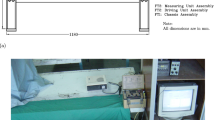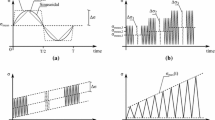Conclusions
-
1.
The fatigue limit σ−1 correlates more closely with the ultimate strength than with other strength characteristic
-
2.
In a number of very important cases (variation in temperature of the medium, tempering temperature, degree of work hardening, etc.) there is a linear relationship between σ−1 and σb. Evaluation of σ−1 on the basis of this realationship leads to fever than when assuming the ratio σ−1]σb to be constant, or when using the Striebeck, Maylinder, Junger and Zhukov equations.
-
3.
If there is an abnormal relationship between σb and temperature, degree of work hardening, aging or variation in the direction of cut of the specimens, there is no correlation between σ−1 and σb.
Similar content being viewed by others
Reference
S. Z. Zhukov, Plant laboratory, 1945, Nos. 11 and 12.
A. Buch, “Prace Instytutu Lotnictwa,” 1959, No. 9.
L. P. Shkol'nik, Coll. Problems of strength of materials and design, USSR Acad. Sci. Press, 1959.
M. P. Markovets, Notch sensitivity of high-strength steels. Coll. Metal fatigue, USSR Acad. Sci. Press, 1960.
A. Buch, Coll. Fatigue strength of materials and elements, IMP Press, 1961.
Author information
Authors and Affiliations
Rights and permissions
About this article
Cite this article
Buch, A. Correlation between fatigue limit, ultimate strength and other mechanical characteristics of steels and alloys. Met Sci Heat Treat 4, 426–430 (1962). https://doi.org/10.1007/BF00820032
Issue Date:
DOI: https://doi.org/10.1007/BF00820032




